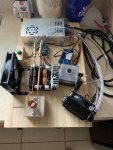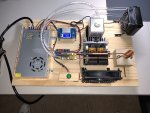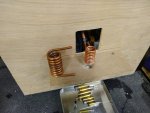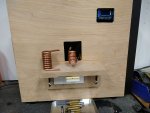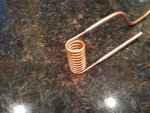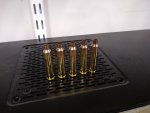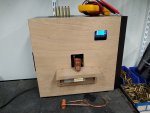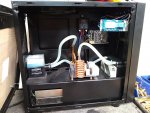It’s been a while since this thread was active but I thought I’d share a subtly that could be useful for some.
I recently picked up some class Z minus pin gauges from McMaster Carr for my 223 brass. My reloading flow is anneal, SS tumble, FL SB resize without expander ball, mandrel, corn cob polish, trim, load. What I noticed after using the .223 mandrel is that the .222 pin would enter as expected but then would hit a hard stop at the neck/shoulder boundary. This was across an entire batch of brass. I ran some brand new brass pieces of the same lot through the same flow (minus the annealing) and the same pin would pass like it should with not a hint of hang up at the neck/shoulder boundary.
My target Tempilaq temperature is 1000F across the neck and shoulder regions. I started increasing the annealing time in 0.1s increments on the remaining fired pieces and found that a slight increase in annealing time completely eliminated the hard stop conditioning with the pin. Going too far and the pin would have little to no drag (ie. over annealed). This was all done at 26V. The optimum anneal would transition the 1000F Tempilaq about an 1/8” below the shoulder.
I then bumped the the supply to 28.5V and was able to achieve the same proper annealing at the neck/shoulder boundary in less time and with the Tempilaq transition right at the shoulder edge.
Summary of all of this...
- get some class Z minus pins appropriate for your brass if you are induction annealing and make sure the neck/shoulder boundary is consistent with the rest of the neck. New brass is consistent. If it hangs up you aren’t annealing that area sufficiently. The whole reason I stumbled upon this is my last outing had erratic velocities using a brand new FX-120i scale. I knew it wasn’t charge variance and everything was the same as far as process. I thought I was over annealing but that wasn’t the case.
- Don’t assume one setting (voltage/time) is appropriate for a given caliber. As your neck thickness decreases over time you may need to tweak the time. Different lots of brass may need to be tweaked. Tempilaq alone is not adequate. You need a pin to know the bullet has consistent tension across the bearing surface. The pin drag between new brass and your fired brass of the same lot should be comparable.
- I’ve stated this before but 750F is not the target temp here. You have to get around 1000F to achieve any annealing whatsoever. You will see a brief glow of the neck and shoulder and that is 100% OK. It doesn’t last long enough to impact the case body.
- If you want to know what over annealed is run a piece or two of brass a second longer and check with the same pin you use for the properly annealed brass. It will about fall through all on its own. The neck will have had no spring back.
The devil is in the details. I’m glad I had to chase this one down as it is something you wouldn’t catch by Tempilaq alone. An arbor press with pressure gauge might have caught it.
Tim



